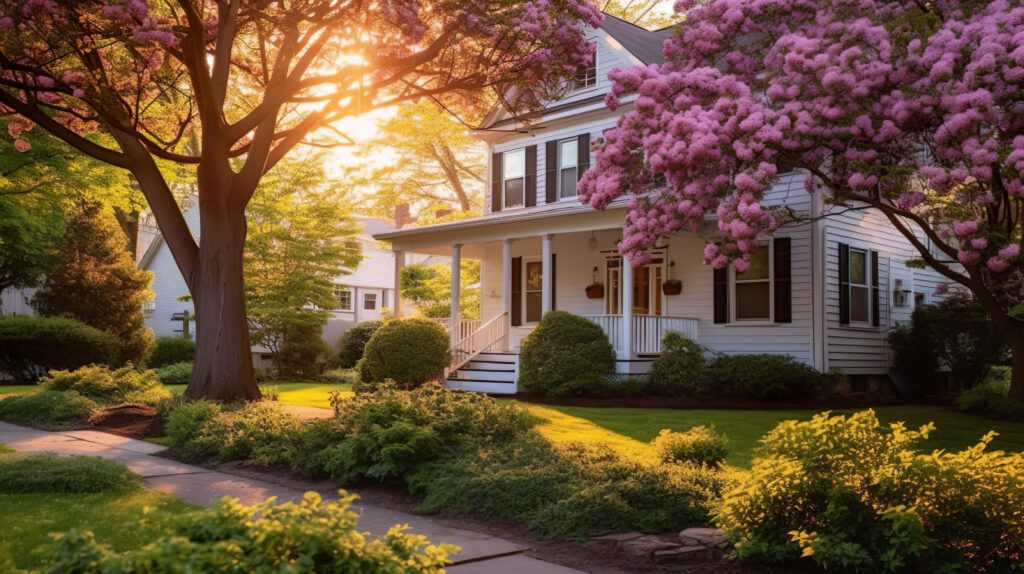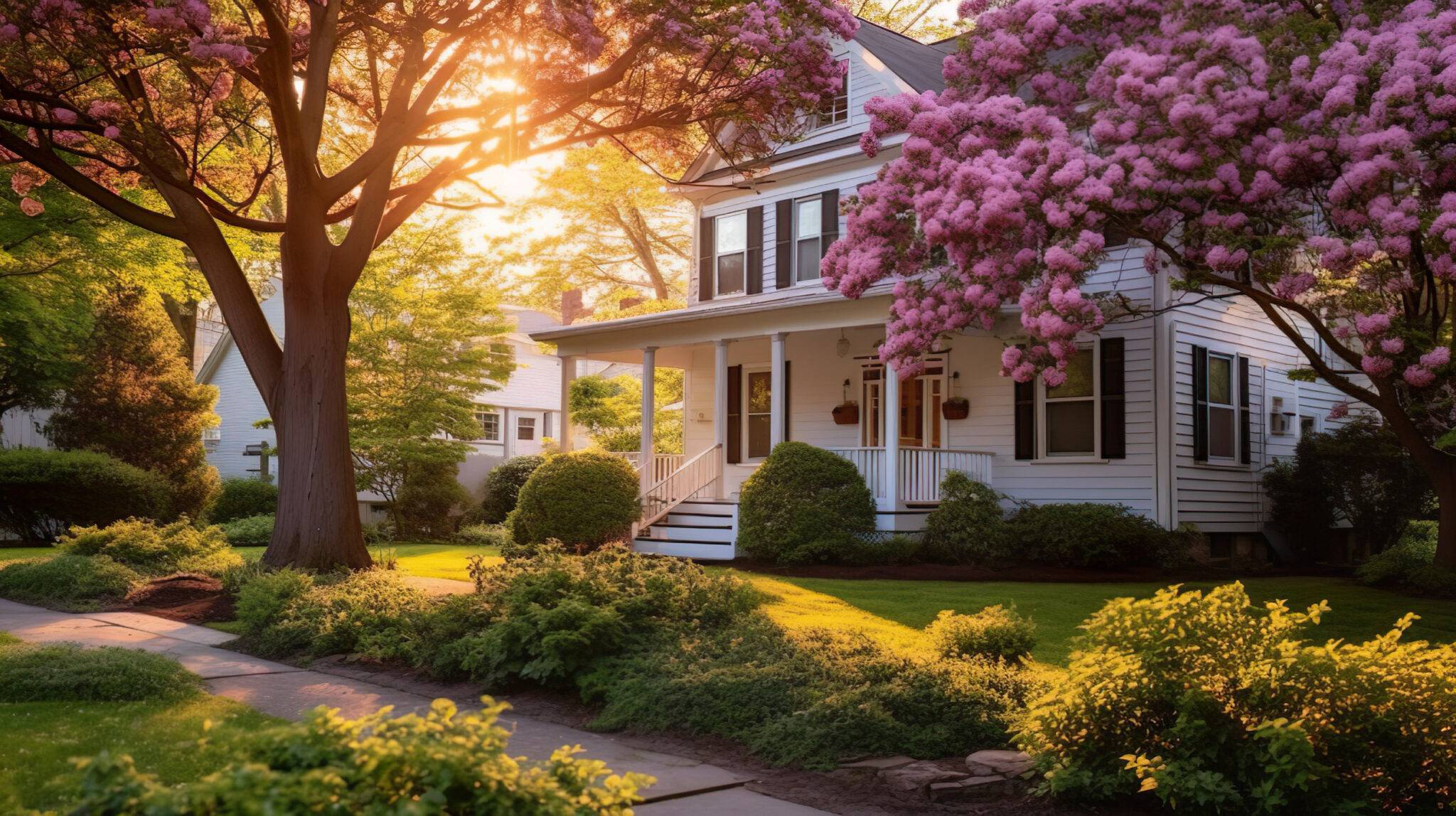An FHA loan is a home mortgage that is insured by the Federal Housing Administration. FHA loans have lower down payment and credit requirements than conventional mortgages, but they may be considerably more expensive.
At the end of 2023, the median home price in the United States was $492,300. To qualify for a conventional mortgage, which requires a down payment of 20%, a home buyer would have to come up with $85,800 – plus additional funds for closing costs and cash reserves.
Not many working Americans have that kind of cash.
That’s why FHA loans are so attractive to young first-time home buyers.

What is an FHA loan?
Designed to make home ownership more attainable, FHA loans incentivize lenders to loosen mortgage requirements with government insurance. If the borrower stops paying the mortgage, the Federal Housing Association will make the lender whole.
FHA loans are only available to first-time home buyers and only through FHA-approved lenders. The U.S. Depart of Housing and Urban Development (HUD) sets maximum mortgage limits for FHA loans that vary by city or county. For example, the 2024 mortgage limit for a one-family house in Baton Rouge, LA was $498,257. The limit in San Francisco, CA was $1,149.825; more than double.
FHA loans are available both for single- and multi-family homes.
FHA loan requirements
To qualify for an FHA loan, you must:
- Have a FICO credit score of at least 500.
- If your score is 580 or better, have a 3.5% down payment.
- If your score is 500 to 579, have a 10% down payment.
- Have less than a 43% debt-to-income ratio
- Certify that the home will be your primary residence.
- Provide proof of employment and steady income for at least 2 years.
- Have a Social Security Number.
- Lawfully reside in the United States.
- Pay MIP (Mortgage Insurance Premiums).
You can obtain an FHA loan with a 3.5% down payment if your FICO credit score is at least 580. You can get an FHA loan with a credit score as low as 500, but if your score is less that 580, a 10% down payment is required.
Bankruptcy does not automatically disqualify you from getting an FHA loan. But, as of January 2016, you must wait at least two years after the discharge date of a Chapter 13 bankruptcy before applying for an FHA mortgage.
FHA loans sound great; what’s the catch?
FHA loans’ relaxed mortgage requirements aren’t free.
All FHA loan borrowers – regardless of credit score or down payment amount – need to pay Mortgage Insurance Premiums (MIP). MIP is similar to private mortgage insurance (PMI) that lenders require borrowers to pay on conventional mortgages when they put less than 20% down.
MIP helps fund the FHA insurance that compensates lenders when borrowers default.
MIP is paid in two ways:
- Upfront MIP: Upfront MIP is a one-time payment equal to 1.75% of your total loan amount. This must be paid at closing and represents additional cash you must have – on top of your down payment.
- Annual MIP: The annual MIP ranges between 0.15% and 0.75% of your outstanding loan balance. The fee you’ll pay depends on your loan term and down payment. This premium is calculated annually and then, usually, paid in installments that are added to your monthly mortgage payment.
So, are FHA loans a good idea?
Standards for FHA loans are more generous than they’ve been in years. Younger Americans who would otherwise struggle to afford a home amid rising prices and high mortgage rates may benefit from the program.
However, it’s important to consider some of the drawbacks of taking out an FHA loan to see if the pros outweigh the cons.
Higher interest rates
While you may be approved for an FHA loan with a lower credit score, you will pay a higher interest rate at a time when all interest rates are already quite high. Even a seemingly small difference in your mortgage rate can add up to tens of thousands of dollars in additional cost.
Putting as little as 3.5% down on your home can be risky as well since you aren’t starting out with much equity. If the value of your home starts to decrease or you can no longer afford your mortgage payments, you could be underwater. If you’re underwater on a mortgage, you cannot sell your home or refinance your mortgage without coming up with a substantial chunk of cash – the difference between what you owe on your mortgage and what your home is worth.
Expensive MIP
The biggest drawback of an FHA loan, however, is the mortgage insurance premium (MIP), which adds to a buyer’s upfront costs considerably and to their monthly costs throughout the life of the loan.
Private mortgage insurance, which is required for conventional mortgages with less than 20% down, is eventually canceled once the borrower builds up enough equity (i.e. once the outstanding loan amount is less than 80% of the home’s value).
This used to be the way FHA loans worked as well. But as of the 2013 changes, they now have different—and less appealing—rules.
The new insurance premium lasts anywhere from 11 years (if you start with at least 10% down) to the entire life of the loan (if you put down less than that, i.e. the 3.5% minimum). The only way to “cancel” it, in these cases, is to refinance. (And FHA does have a process for refinancing that actually refunds some of your upfront MIP.)
For a starter home in an area that’s not too expensive, this additional expense may not be so bad. But in expensive cities like Boston where housing costs are out-of-this-world, the mortgage insurance premium adds on considerable expense and no extra value.
For a two-bedroom condo costing $430,000, a 3.5% down payment would be $15,050, leaving $414,950 to be financed. The upfront MIP of 1.75% would tack on an additional $7,261 to your closing costs, bringing upfront costs to $22,311. The annual payments (at .85% of the loan amount) would add another $3,500 to your yearly costs, or just under $300 a month. That’s a lot of money just to set your lender’s mind at ease.
Typically, the upfront MIP is added to your loan amount (though it does not affect your loan-to-value ratio), meaning that you’ll be exceptionally close to underwater on your new house from the minute you sign your papers. That seems unnecessarily stressful!
A conventional mortgage may be cheaper
In contrast, private mortgage insurance requires little to no payment upfront (and thus doesn’t have to be financed), and goes away as soon as your loan-to-value ratio hits .78 (and you can request they cancel it as soon as it hits .80).
Depending on your credit, private mortgage rates might also be lower—as low as 0.5% of your total loan amount per year. If you’ve got the credit necessary for a more conventional loan, and can scrounge up closer to 10% for a down payment, a conventional loan is a better deal.
And if your credit isn’t great, or you don’t yet have that much, there’s nothing wrong with taking a few years to fix it before buying a house.
